- Formidable Function
- Posts
- LP/OP #9
LP/OP #9
Tesla & Tactics
Welcome back to the LP/OP, friend.
This newsletter shares insights from the highly pragmatic military methodologies learned throughout my nearly 20 years spent in the military and private sector.
We do so briefly and clearly with respect for your time to give you an edge over your competitors, adversaries, and enemies.
Every week we cover new…
Tactics, Techniques, and Procedures (TTPs)
Inspirational Exemplars
This week, we take a look at one of the most famous figures in all of history, Nikola Tesla, and some of his rivals. In doing so, we’ll uncover the psychological dimensions of three advanced concepts: Defilade Positioning, Intentional Drift, and Information Denial. These principles equip you to recognize and counter malevolent tactics designed to undermine you.
Let’s break them down.
Defilade Positioning
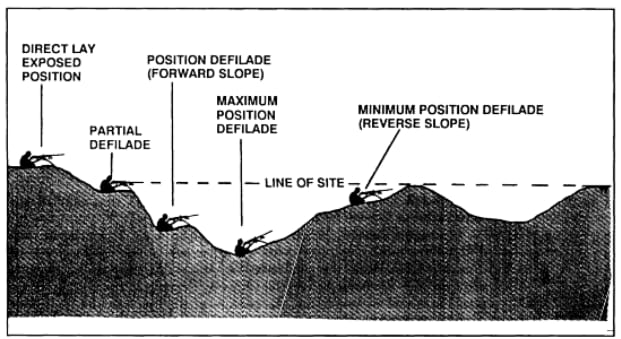
Minimum and maximum position defilade, partial defilade, and direct lay areas.
Understand where you are at all times.
Your advantage.
People are planning surprise attacks to catch you off guard and force you into a defensive posture.
Maybe you have a high-stakes meeting coming up. A peer may unexpectedly criticize your recent work, putting you on the spot and creating the impression that you’re unprepared or incompetent. Their goal is to elevate themselves by diminishing your credibility.
How do you combat and crush this behavior?
Defilade Positioning is your psychological shield. Anticipate potential attacks by preparing responses that redirect attention to the broader picture or the positives of what’s been accomplished so far. Practice staying calm and composed, even under pressure, to deny others the satisfaction of rattling you. Protecting your vulnerabilities ensures that their ambush loses its impact.
A strong defense gives you the foundation to respond strategically.
You’ll be returning fire from a covered position, and the element of surprise they tried to take advantage of will disappear.
Example: Nikola Tesla and Heinrich Hertz
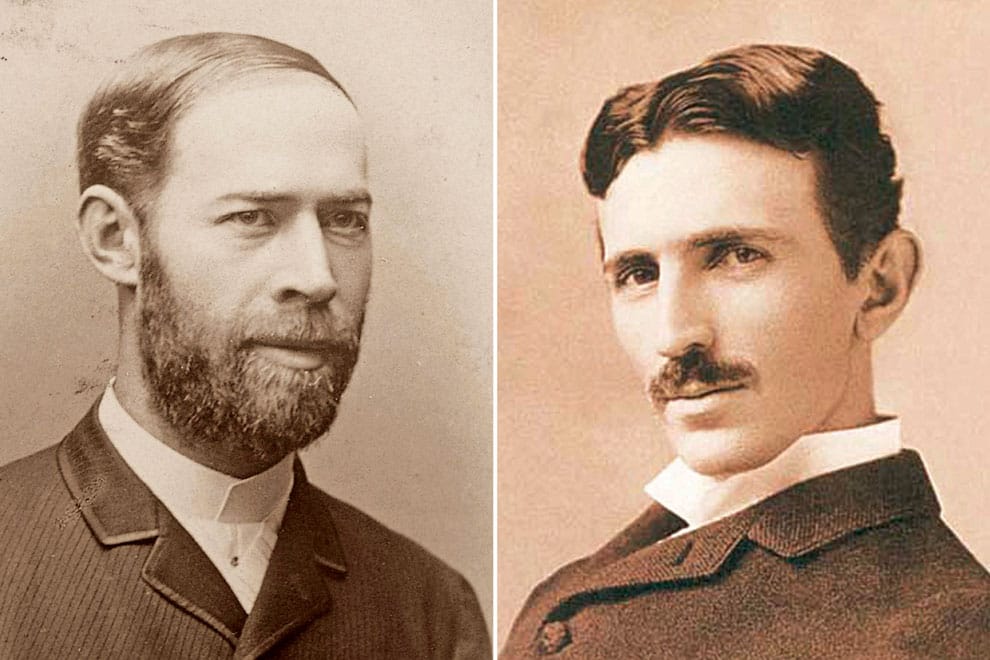
Hertz (left) and Tesla (right) competed in advancing the field of electromagnetic waves, with Hertz focusing on proving their existence and Tesla pursuing their practical use for wireless energy and communication.
In the late 19th century, Nikola Tesla employed defilade positioning to distinguish himself from Heinrich Hertz and other physicists dominating the study of radio waves.
While Hertz focused on electromagnetic wave experiments, Tesla bypassed direct competition by pursuing a grander vision: wireless energy transmission through the Earth itself.
Rather than engaging in academic debates, Tesla demonstrated his groundbreaking Tesla coil, showcasing wireless energy transfer on a scale Hertzian experiments couldn't match. Tesla avoided public critique of Hertz, instead presenting his work as a natural progression.
By appealing to industrialists and focusing on practical applications, Tesla sidestepped academic scrutiny while positioning himself as a visionary.
A perfect example of defilade positioning in abstract terms.
Though his ambitious Wardenclyffe Tower ultimately failed due to funding issues, Tesla's strategy allowed him to operate beyond the immediate fray, ensuring his legacy as a pioneer in wireless energy far surpassed his rivals.
Intentional Drift
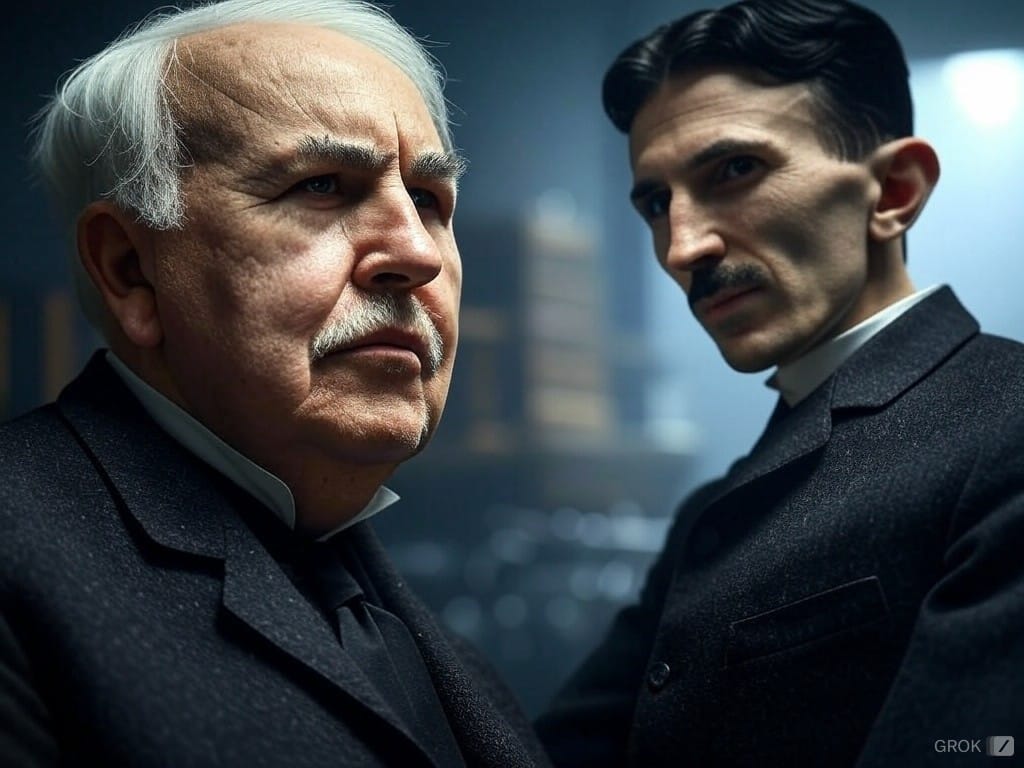
Thomas Edison (left) and Nikola Tesla (right) engaged in contentious competition over which electricity standard would power America - Edison’s DC or Tesla’s AC.
Your advantage:
Rigid adherence to plans or beliefs can be exploited, using predictability to manipulate outcomes.
In other words, the more committed one is to a plan, the more susceptible they are to defeat. Intentional drift is a skill when applied from a psychological standpoint. If you’re able to build in perceived leeway for your opposition, they’ll feel like they’re gaining ground, but they’re really just in your “drift”.
Remain focused on your objectives and let others’ distractions fall by the wayside.
Example: Nikola Tesla and Thomas Edison
The War of Currents
Edison, an established veteran in the electrical industry while his rivalry with Tesla was developing, had a well-known reputation for being dismissive of ideas that didn’t align with his vision. However, he often entertained competitors' visions for strategic reasons. One particular instance was during the so-called War of Currents between Edison's direct current (DC) system and Tesla’s alternating current (AC) system. Edison would publicly feign openness to AC while subtly undermining it.
In one meeting with financiers and engineers, Edison reportedly listened to a pitch for using Tesla's AC technology for long-distance power transmission. Edison nodded along and asked pointed questions as though he were seriously considering it. This display of placation kept investors and colleagues engaged, making Edison appear open-minded and collaborative.
However, behind the scenes, Edison likely had no intention of using AC. Instead, he orchestrated campaigns against it, conveying AC as dangerous by electrocuting animals in public demonstrations. His apparent willingness to entertain Tesla’s ideas was simply a facade to maintain the flow of discussions, keeping his competition close without ever conceding any ground.
The benevolence of this tactic may not be without question, but its effectiveness is not.
Information Denial
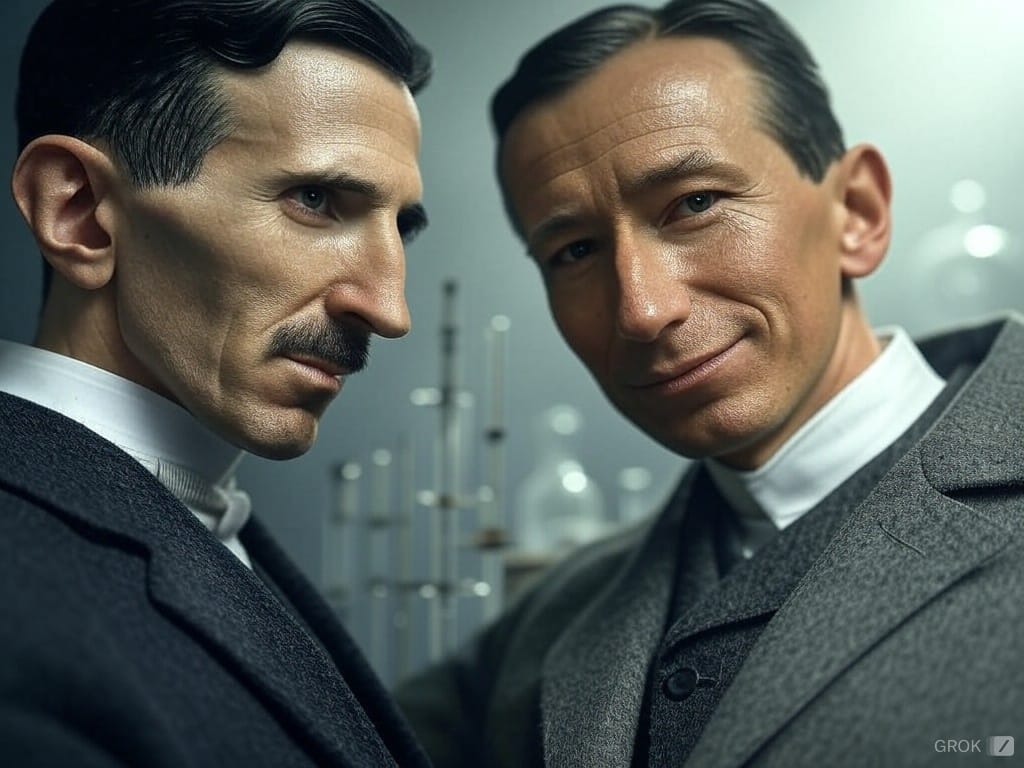
Tesla (left) and Marconi (right) raced to develop the first wireless communication system around the turn of the 20th century.
Some individuals manipulate by spreading misinformation, twisting your words, or using the details you share against you.
Information Denial is about controlling access to your plans, concerns, and vulnerabilities. Share strategically and only with those you trust implicitly. Frame your words in ways that cannot be easily misconstrued or weaponized. By limiting the information others can exploit, you maintain control over your narrative and protect your reputation.
Example: Nikola Tesla and Guglielmo Marconi
A fascinating example of information denial in a rivalry involved Nikola Tesla (again) and Guglielmo Marconi during the race to develop the first wireless communication system.
Tesla, a pioneer in wireless energy transmission, was working on his vision for long-distance wireless communication through his Wardenclyffe Tower project. Tesla's patents, filed in the late 1890s, detailed groundbreaking techniques for transmitting signals wirelessly using tuned circuits. However, Tesla, being secretive by nature, revealed only limited information about his progress, keeping much of his work shrouded in mystery. This secrecy was partly to protect his ideas from rivals like Marconi, who was also racing to create a wireless communication system.
Marconi, meanwhile, aggressively pursued his own wireless telegraphy system and made several strategic advancements. Unknown to Tesla, Marconi incorporated elements of Tesla's patents into his work. While Tesla believed his superior understanding of wireless transmission would make his system the ultimate solution, Marconi managed to win the race by successfully transmitting the first transatlantic wireless signal in 1901.
Tesla later accused Marconi of using his patented technology without permission, but Marconi’s early success overshadowed Tesla’s claims. By withholding details about his project, Tesla inadvertently allowed Marconi to advance without fully understanding his rival’s progress, ultimately losing the race for recognition in wireless communication.
The Tesla-Marconi rivalry remains one of the most dramatic and consequential in the history of technology.
This example showcases how information denial can backfire in rivalries, as secrecy isn’t always the optimal way to outmaneuver a competitor who is more aggressive and opportunistic.
The strongest competitors typically do not need to withhold information because they are constantly acquiring new information to stay ahead of the pack. But just like everything else in life, balance is required. If someone has shown themselves to be your enemy, you must play your cards close to the vest and deny them information.
Inspiration: Major General George Owen Squier
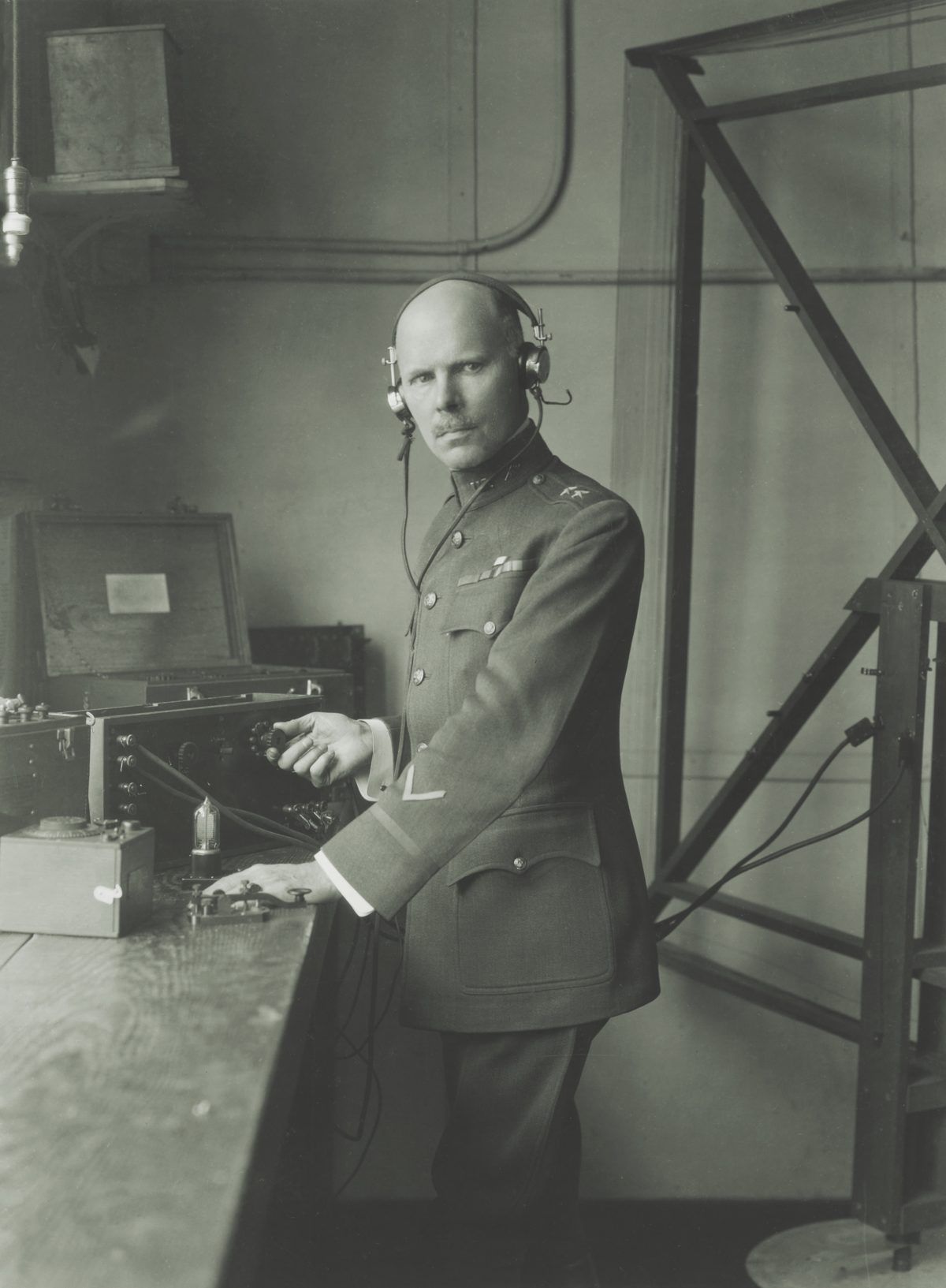
Major General George Owen Squier, the U.S. Army’s chief signal officer, at work in his laboratory in Washington, D.C., in 1920. (National Archives)
General George Owen Squier and Nikola Tesla collaborated on pioneering advancements in wireless communication and electrical systems, blending Tesla’s groundbreaking innovations with Squier’s military acumen.
Together, they exemplified the principles of Defilade Positioning, Intentional Drift, and Information Denial in both their work and their approach to technological and strategic challenges.
Securing Communication Channels using Defilade Positioning Concepts
Squier understood the vulnerability of military communications to interception and interference. Working with Tesla, he explored methods to shield signals from external disruption, effectively creating "defilade" positions in the electromagnetic spectrum. Tesla’s concepts of frequency hopping and secure wireless transmission helped the U.S. Army develop communication systems that were resistant to jamming or interception.
By safeguarding critical communications, Squier and Tesla ensured the Army could operate with confidence, maintaining strategic advantage even in contested environments. This principle reflects a modern approach to protecting sensitive systems, whether through encryption or physical shielding.
Using Intentional Drift to Create Flexibility in Adapting Wireless Technology
Squier and Tesla didn’t adhere rigidly to any single communication methodology.
Instead, they embraced flexibility. Tesla’s broad-spectrum knowledge allowed them to experiment with multiple technologies - such as radio, multiplexing, and even early concepts of powerline communication. Squier applied these technologies as needed, depending on operational demands, showcasing a clear example of Intentional Drift in application.
Squier’s Signal Corps adapted Tesla’s innovations to create field-ready systems that could be scaled or modified based on tactical needs. For example, the ability to switch between wired and wireless systems during World War I ensured uninterrupted communication despite evolving battlefield conditions.
Information Denial and Operational Security
Squier and Tesla operated in an era of intense global competition for technological supremacy.
Squier ensured Tesla’s work, much of which had military applications, was protected from espionage. The pair worked to ensure that sensitive developments, such as Tesla’s concepts of directed energy and secure wireless networks, remained classified to prevent them from falling into enemy hands.
Outbrief: Impact on Military Operations
This principle of Information Denial has kept U.S. communications secure while also misleading adversaries about the Army’s true capabilities.
By controlling the flow of information, Squier not only protected assets but also created an aura of unpredictability, keeping enemies on their heels.
Together, General Squier and Nikola Tesla demonstrated how innovation and strategy could merge to create revolutionary advancements. Their partnership integrated Tesla’s visionary inventions with Squier’s operational expertise, producing results that transformed military communications.
Defilade Positioning: Securing communication channels, protecting them from external threats.
Intentional Drift: Adapting technologies flexibly to meet evolving operational demands.
Information Denial: Keeping advancements under strict control to maintain strategic advantage.
Their combined work laid the foundation for modern military communications, demonstrating that foresight, adaptability, and secrecy are timeless principles of success. By understanding and applying these concepts in your specific challenges, you can emulate the brilliance and resilience of Squier and Tesla’s collaboration.
While I hope the info in this week’s newsletter was entertaining, I more so hope it provided incentive and tools for you to outpace your competition. To defeat your competition, you have to know more than them, and you must have access to unique information.
Stay fortified. Stay adaptive. Stay formidable.
Thank you for reading. Genuinely.
— Ryan “DQ” DeQuiroz —